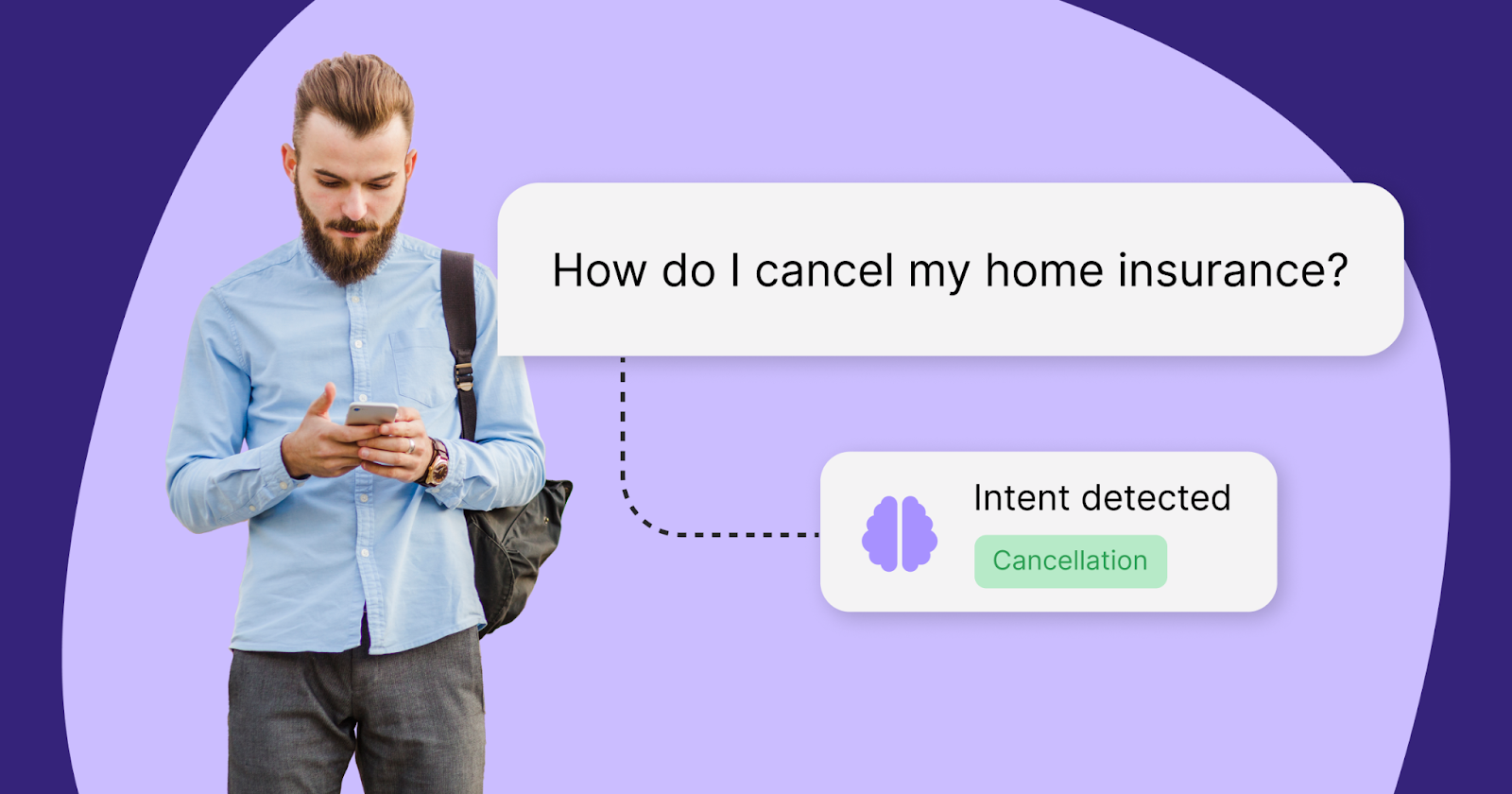
By 2025, AI is expected to handle 95% of customer interactions.
Let’s take a step back to reflect on that.
In 2019, Gartner reported that the number of enterprises employing AI grew by 270%, resulting in a share of 37% of organisations reporting to use AI in some capacity. So yes, we’ve come a long way since that report, but it hasn’t been frictionless.
The leap towards reliance on AI can be daunting. It’s why over half of companies using AI are stuck in the exploration phase or using AI in a limited capacity. There’s a reluctance to fully embrace conversational AI for fear of laborious implementation, compromised customer satisfaction, or misinformation.
We ask ourselves, what if the AI doesn’t understand our customer’s needs?
When we should be asking, what if it does?
Hubtype Smart Intents
Smart Intents is a powerful conversational model that promises to transform how customer interactions are handled. It offers unparalleled intent detection by harnessing the power of advanced Large Language Models (LLMs), eliminating the risks of hallucinations and misinformation.
With Smart Intents identifying customer intent, you remain fully in charge of the response. Unlike other GenAI applications, Smart Intents ensures that there is zero risk of chatbots providing false information. This issue has become a focal point in the GenAI field after several incidents where AI-powered chatbots provided misleading information, such as Air Canada’s recent case where the chatbot contradicted the company’s bereavement fares policy.
Current conversational models incorporate GenAI to identify user intents through Natural Language Understanding (NLU), but reaching full automation remains a challenge.
If the system has extensive training data, it will recognise every possible user intent or utterance, often resulting in customer queries reaching dead ends and requiring human intervention. Additionally, GenAI poses the risk of generating inaccurate or fabricated information, known as hallucinations, which can damage user trust.
How it works
In the example below, a user seeking a refund through an NLU query was inaccurately matched to the “None” intent rather than the “Issue Refunds” due to missing utterances in the training data. The system would have succeeded if the user asked, ‘where is my refund?’. Instead, a slight variation led to a failed recognition.
In these scenarios, GenAI attempts to respond accurately based on its training or must pass the case to a human agent. Maintaining high-performing utterances requires significant labour, and inadequate training data can cause delays in resolution.

With Smart Intents powered by LLMs, the same search and training data correctly identified 'Issue Refunds,' even though traditional NLU classified it under 'None.' This difference is due to Smart Intents' ability to solve a zero-shot problem, where LLMs can resolve tasks not explicitly trained for using just a set of instructions.
By leveraging this approach, Smart Intents eliminates the tedious need for extensive sample-based retraining required by traditional intent detection models. Instead, it accurately interprets customer intent, overcoming the limitations of traditional NLU.
Why Smart Intents Matter
As customer expectations continue to rise, customer care leaders increasingly rely on conversational AI for automation and scalability. Smart Intents brings a breath of fresh air to the field by offering a solution that accurately understands customer intentions while keeping you in complete control of the responses.
Key features include:
- Precision with Natural Language Understanding (NLU): Leveraging NLU technologies, Smart Intents can detect user intents with remarkable precision. By simply providing a brief description of the user intent, Smart Intents seamlessly recognises related customer queries and matches them to the appropriate content in real time.
- Speed and Scalability: Unlike traditional AI systems requiring extensive training data, Smart Intents deliver higher accuracy with just a concise description. They eliminate the need to maintain vast libraries of examples, allowing you to adapt and scale your automated messaging efficiently.
- Consistent Accuracy: Smart Intents prioritise accuracy by identifying user intent without generating new content. This keeps you fully in control of the response, allowing you to provide customers with accurate and consistent information that aligns with your brand.
- Privacy and Compliance: Protecting user data is paramount. Hubtype's Smart Intents are GDPR-compliant, anonymising Personally Identifiable Information (PII) and leveraging EU-based hosting with Microsoft Azure's GPT API. User data is never used to retrain AI models, safeguarding privacy.
How Smart Intents Streamline Customer Care
- Fast responses: Smart Intents minimise latency by rapidly identifying intents and guiding users to the right answers or workflows quickly.
- Easy implementation: With no lengthy training processes, integrating Smart Intents into your automated messaging flow is straightforward. The drag-and-drop interface makes it easy to set up and connect Smart Intents to the corresponding response content.
- Accurate Detection: Smart Intents offer precise intent recognition, reducing the need to escalate to live agents. This allows customers to resolve their issues more effectively and quickly through automated processes.
Getting Started with Smart Intents
Adding Smart Intents to your conversational flows is simple:
- Drag & drop: Place the Smart Intent component onto your flow board.
- Define intent: Provide a title and a brief description of the customer intention you want to recognise. You’ll want to make sure that these descriptions are clear and follow a specific format. (For example, “trigger this intent when…”)
- Connect content: Link the Smart Intent to the specific content you wish to deliver in response.
That's it! The powerful Smart Intents system will automatically recognise relevant queries and direct users to the appropriate part of the customer journey.
A path to a deeper understanding
Smart Intents are an invaluable addition to any customer communications strategy, leveraging conversational AI to automate interactions with precision and speed. By accurately detecting user intent and directing users to the appropriate response within the conversational flow, Smart Intents empower businesses to harness the power of LLMs while minimising risks.
It's time to elevate your customer care automation, offering seamless user experiences that delight customers and improve efficiency.
Want to learn more about how to implement Smart Intents in your communications? Let’s chat!
.jpeg)


.jpeg)
.jpeg)




.jpeg)

